PsychNewsDaily Publishers
100 Summit Drive
Burlington, MA, 01803
Telephone: (320) 349-2484
PsychNewsDaily Publishers
100 Summit Drive
Burlington, MA, 01803
Telephone: (320) 349-2484
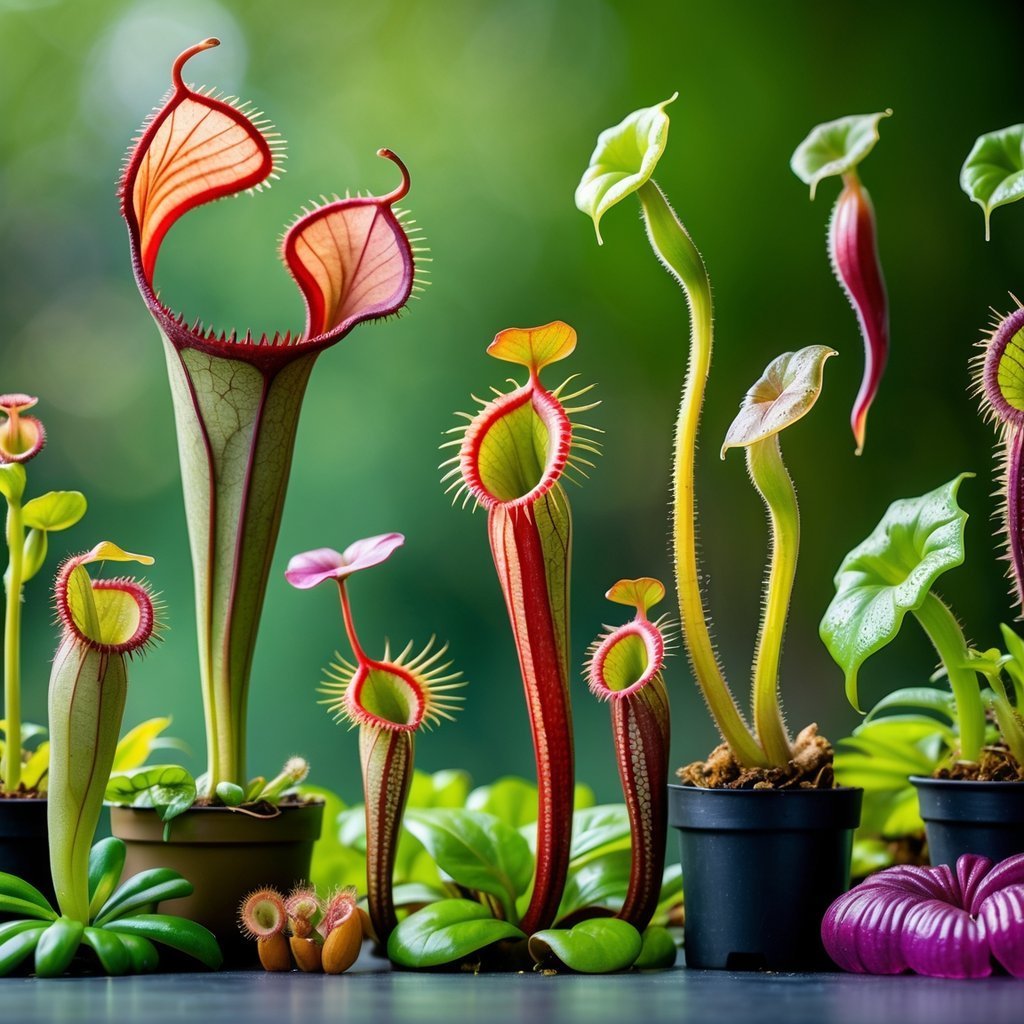
Carnivorous plants are honestly just wild. They don’t survive off soil alone like most plants. Instead, they go after animals—catching and digesting them for nutrients.
You probably know some of them eat bugs, but a few can trap much bigger prey. It’s kind of mind-blowing, really.
Here are nine carnivorous plants that chow down on more than just insects—nature’s full of surprises. Once you get to know these plants, you’ll see how they manage to thrive where most others just can’t hack it.
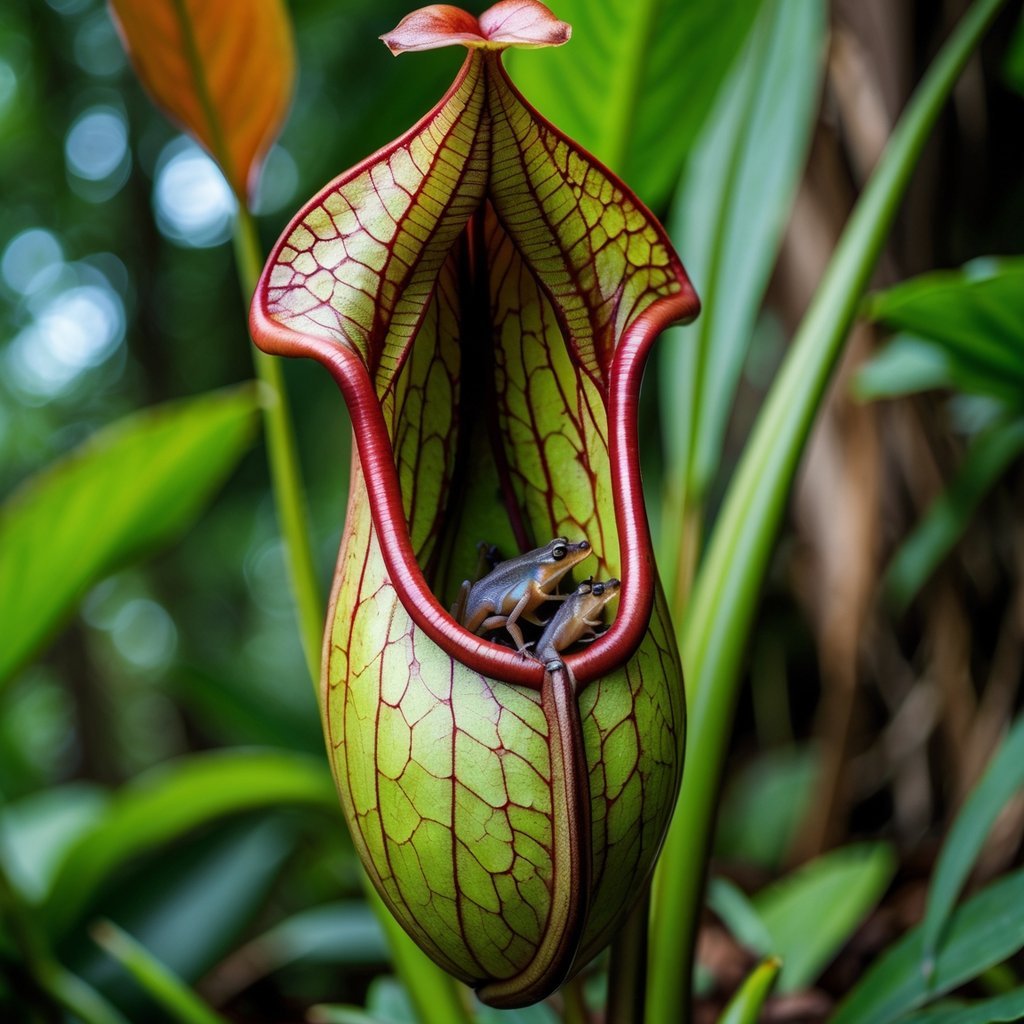
Nepenthes rajah grows in the rainforests of Borneo. It stands out because of its massive pitchers—some can hold over three liters of fluid.
This plant doesn’t stop at bugs. It actually traps small mammals like rats and even frogs. When animals slip inside, Nepenthes rajah digests them slowly to soak up those nutrients.
The pitchers lure prey with sweet nectar. What’s really cool is that some tiny creatures live only inside these pitchers. Nature gets pretty creative with this one.
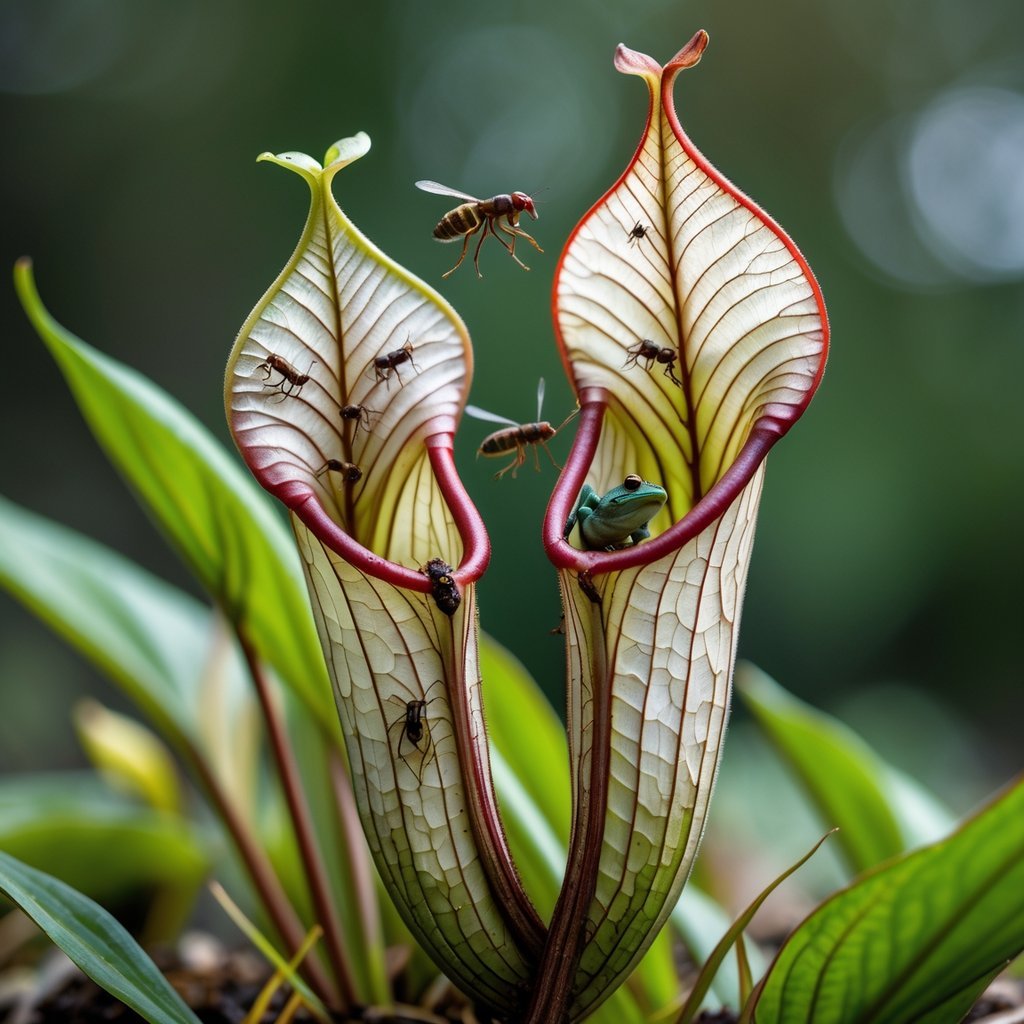
Sarracenia leucophylla catches your eye with its white top and red veins. This pitcher plant uses color and nectar to draw in insects.
When bugs land on the slippery rim, they tumble inside and can’t get out. Every now and then, a small frog gets trapped too if it’s not careful.
The plant digests its trapped prey to get minerals it can’t find in the soil. It’s a natural bug catcher, and honestly, a bit of a show-off with those colors.
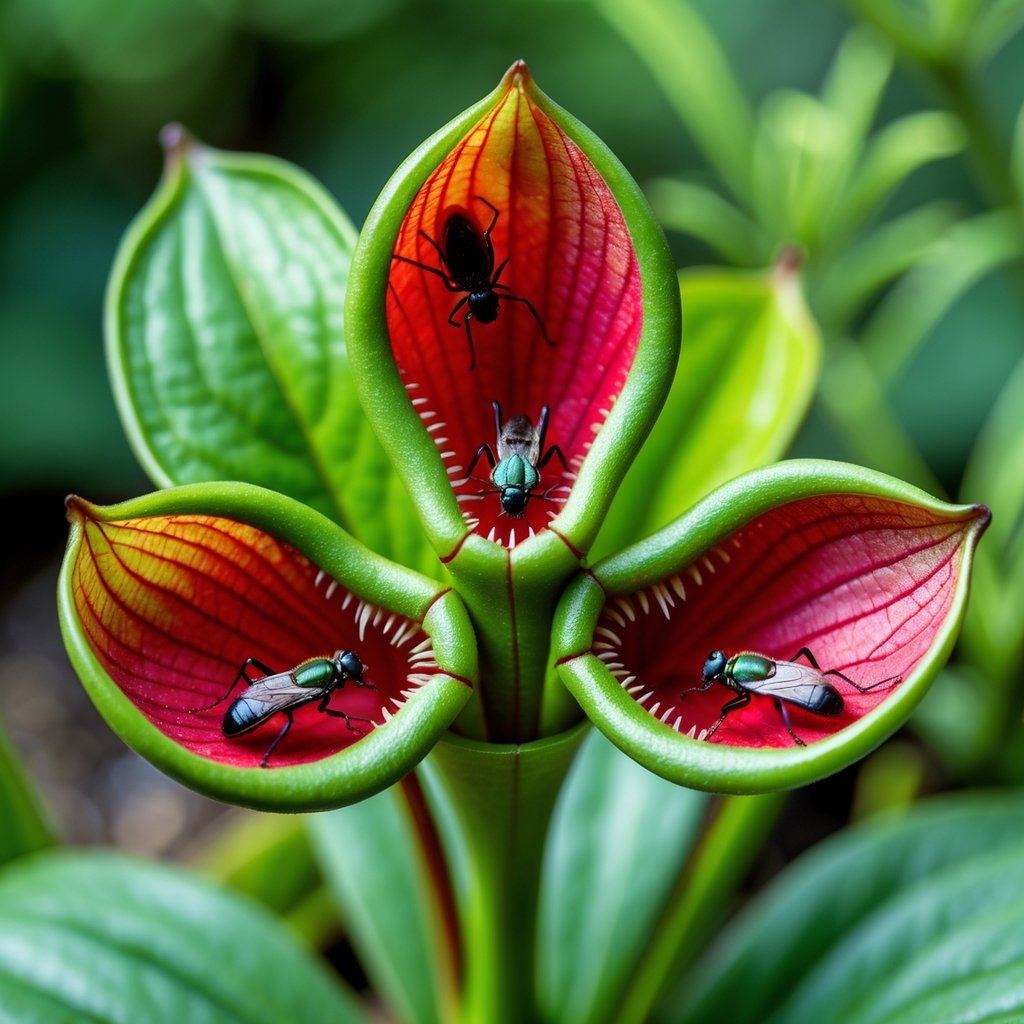
The Venus flytrap is famous for snapping shut on its prey. It mostly eats ants, beetles, and grasshoppers, but sometimes it nabs a small spider too.
Its leaves act like little jaws. When an insect touches the trigger hairs twice, the trap snaps closed—fast enough to surprise anyone watching.
Venus flytraps grow in wetlands with lousy soil. Since they can’t get enough nutrients from the ground, they rely on what they catch. You’ll mostly spot them in the Carolinas.
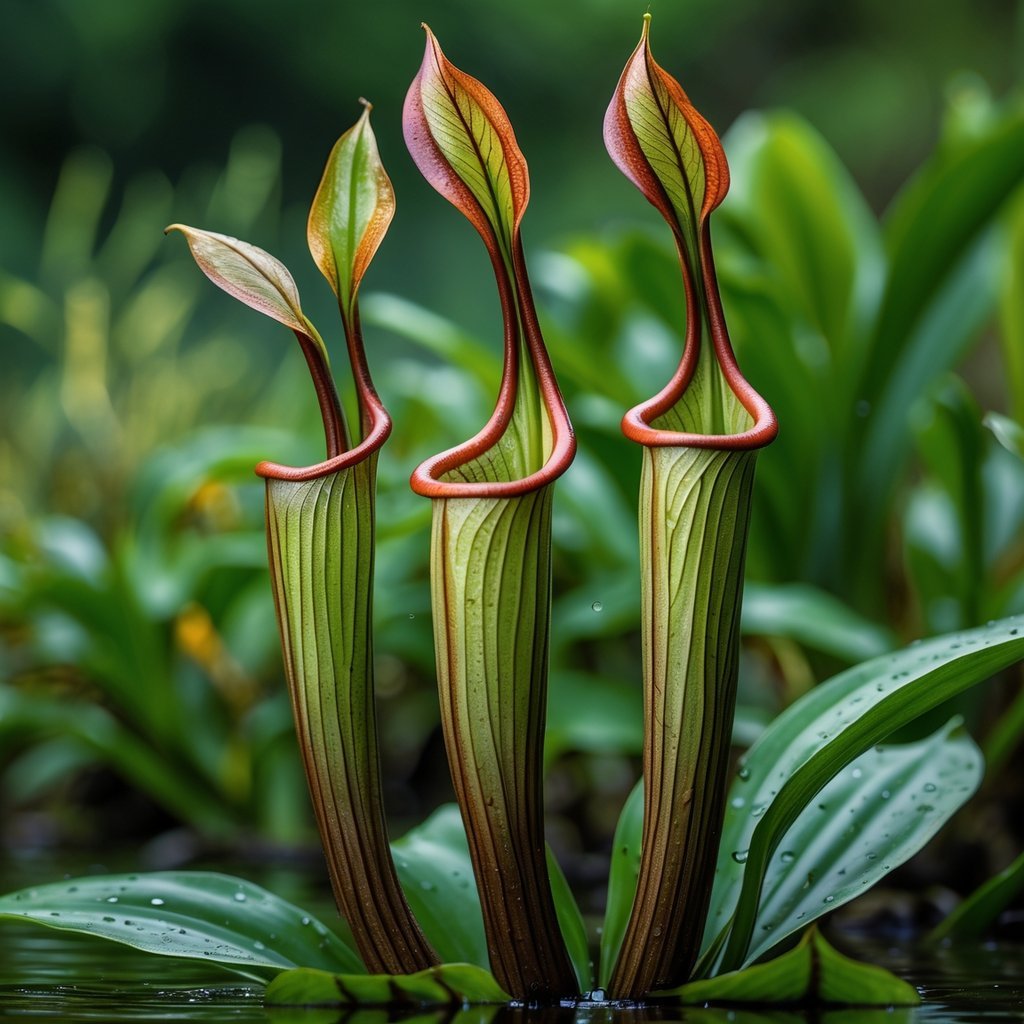
Cobra lilies have pitchers that look just like a cobra’s hood—kind of uncanny, honestly. They use a sweet scent to lure insects inside.
Once inside, bugs slip down and can’t get back out. The plant fills the pitcher with water to drown its prey.
Sometimes, small aquatic critters get caught too. Cobra lilies grow in cold, wet spots like bogs and streams, so local animals wander in now and then.
The nutrients from these animals help the Cobra lily thrive where the soil just isn’t cutting it.
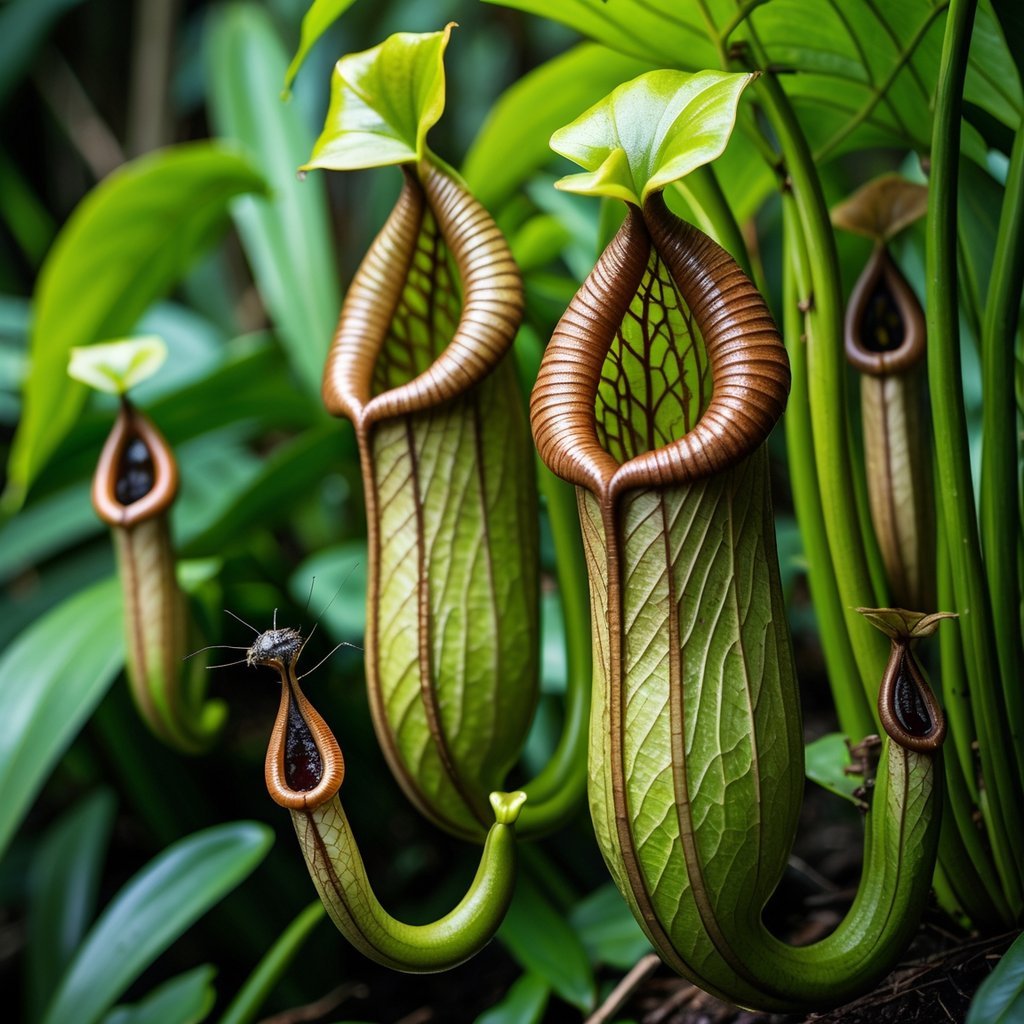
Nepenthes attenboroughii lives in the mountains of the Philippines. It’s named after Sir David Attenborough—pretty fitting for such a rare plant.
The pitchers are huge, sometimes wider than a dinner plate. They fill up with liquid, drowning insects and even small rodents.
At first glance, you’d think it just eats bugs. But its size lets it take down small vertebrates, which is pretty wild for a plant.
If you’re curious about plants that go beyond just eating insects, this one’s worth a closer look.
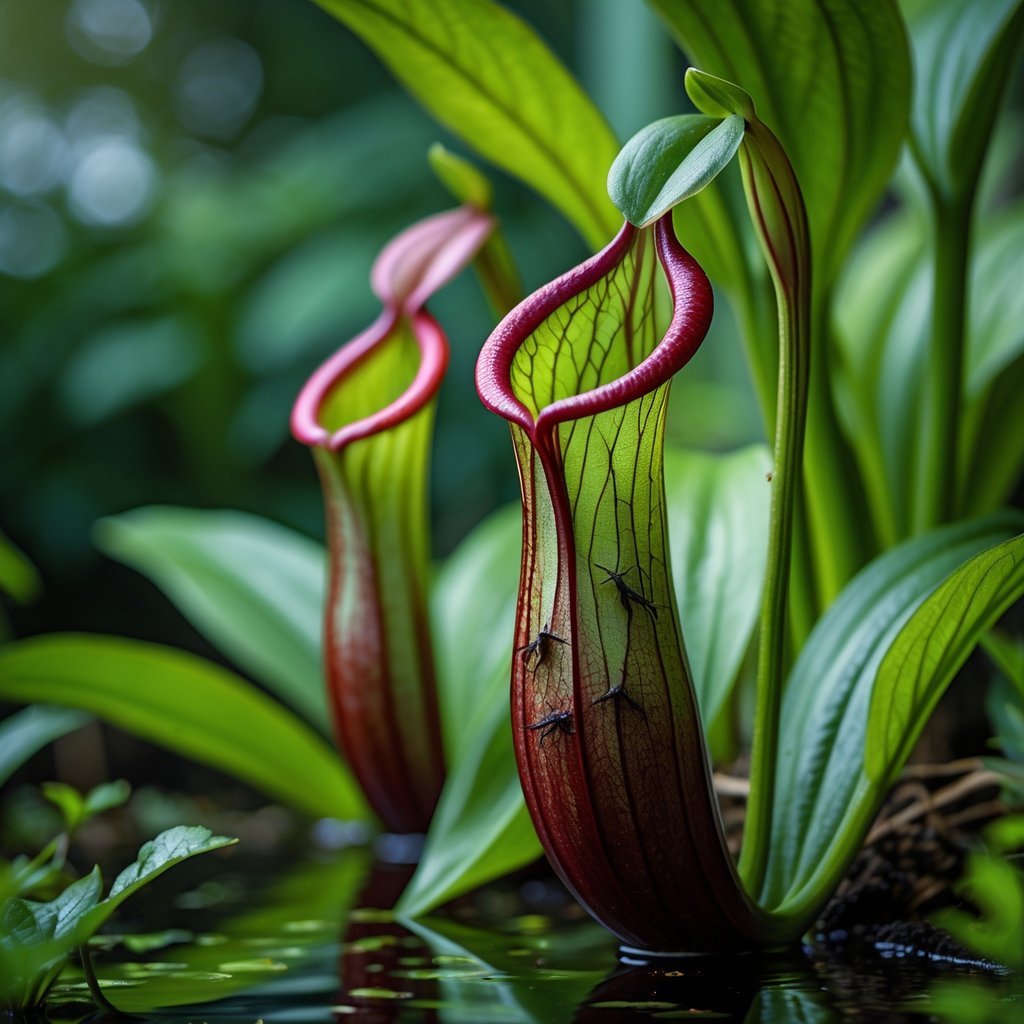
Sarracenia purpurea, the purple pitcher plant, grows in North American wetlands. Its pitchers are short and wide, perfect for catching falling insects.
Water collects inside, creating a mini habitat for mosquito and midge larvae. These larvae can live safely in the pitcher, even while the plant digests other trapped bugs.
This plant is neat because it’s both a predator and a host. You get a little ecosystem right inside the pitcher.
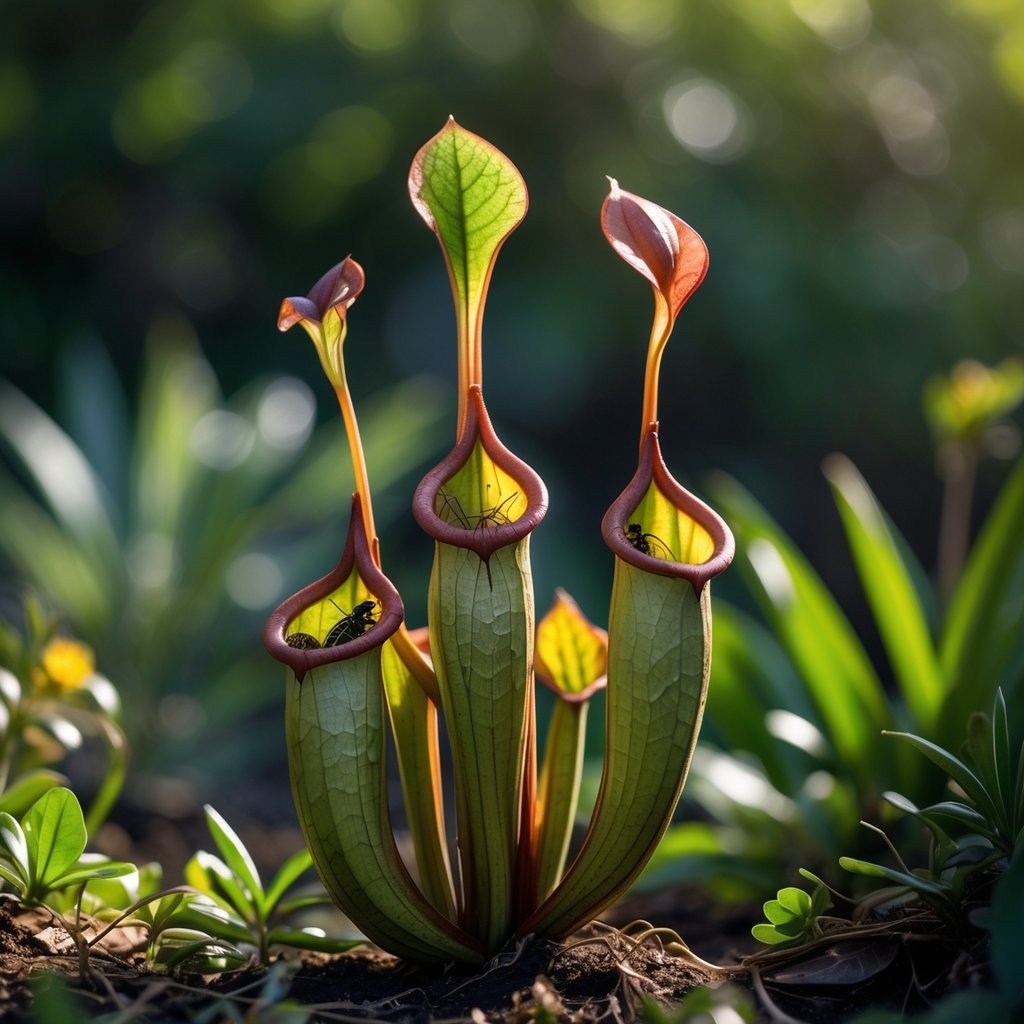
Cephalotus follicularis, the Australian pitcher plant, pops up in sandy ground in southwestern Australia. Its small, colorful pitchers work like pitfall traps for insects and other tiny invertebrates.
Your plant gets nutrients from both sunlight and the prey it catches. If it’s not catching enough, you can toss in a few fruit flies or ants to help it along.
This plant is compact and honestly pretty easy to keep in a terrarium or sunny window. Its quirky traps make it a fun one to grow.
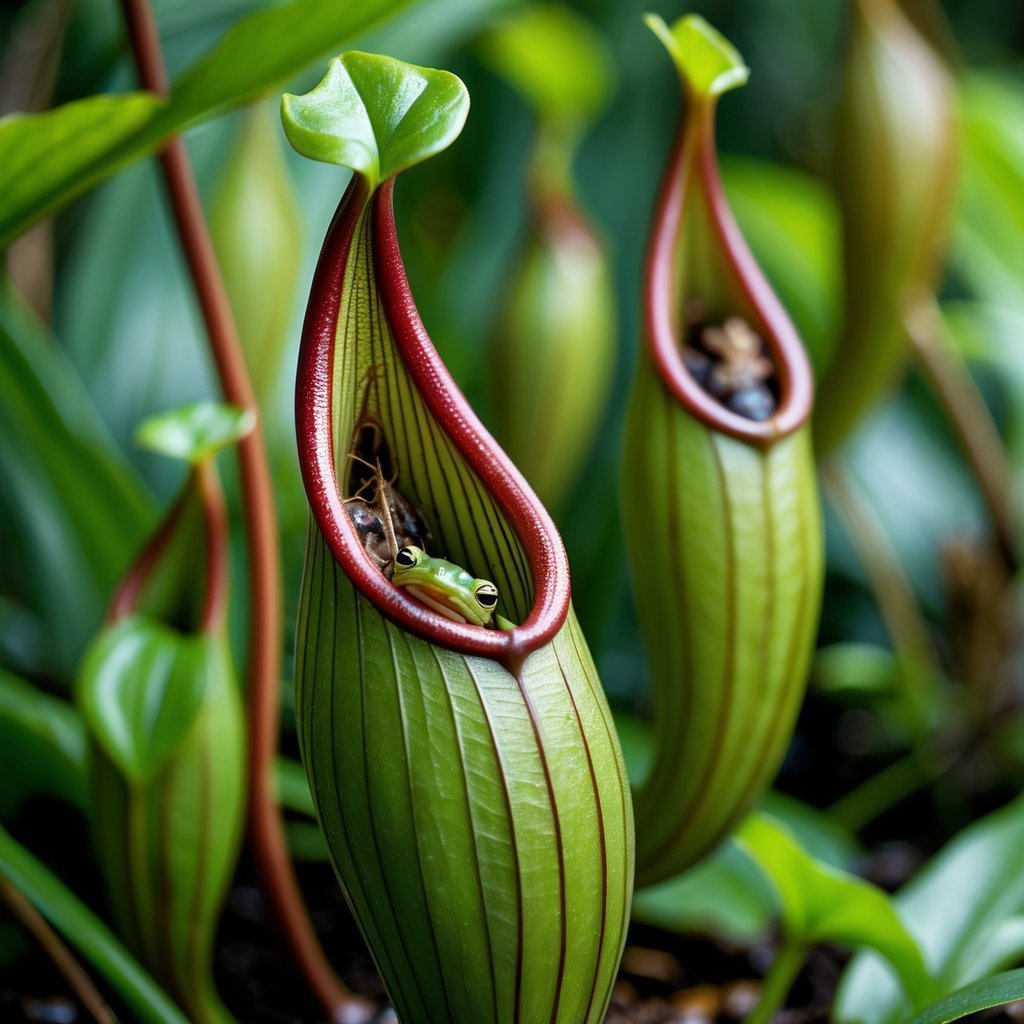
Heliamphora nutans stands out with its nodding pitchers. These traps lure insects with sweet nectar, and the slippery surface sends them tumbling inside.
Digestive fluids break down the prey, giving the plant a much-needed nutrient boost. Sometimes, a tiny frog falls in too—rare, but it happens.
Heliamphora nutans grows on South American mountaintops. If you want to care for it, use low-mineral water and plenty of light. It’s a cool addition to any collection, especially with those colorful pitchers.
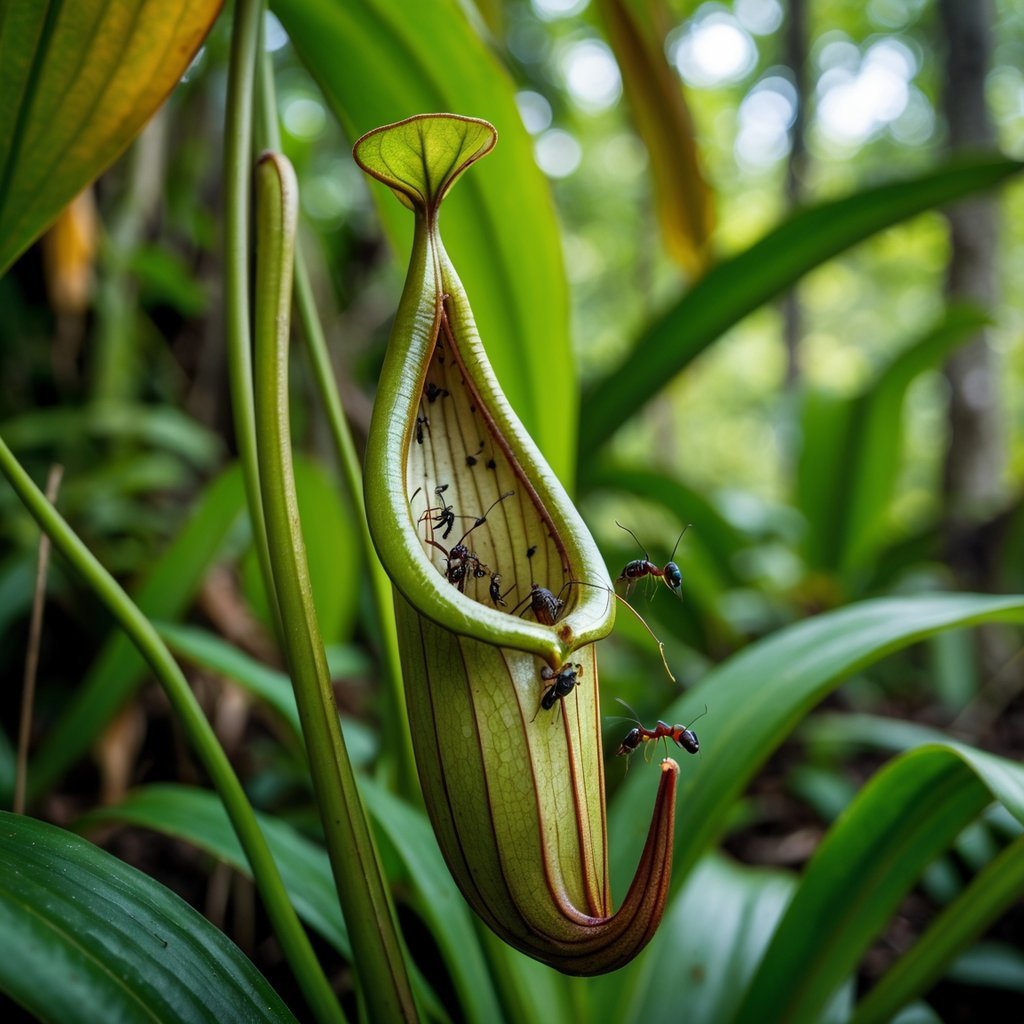
You’ll spot Nepenthes bicalcarata deep in Borneo’s tropical forests. This pitcher plant really stands out with its two fang-like spurs poking out near the lid.
Those “fangs” seem to lure insects and even small animals right to the edge. It’s kind of wild, honestly.
But here’s where it gets even more interesting—Camponotus schmitzi ants move right in, making their homes inside the hollow tendrils. The ants actually protect the pitcher, picking off pests and cleaning up the leftovers from the plant’s latest catch.
The plant does way better in poor soil with this kind of backup. The ants get a solid home and steady snacks, while the plant scores extra nutrients from whatever stumbles inside.
Nature’s teamwork at its weirdest and maybe its best, if you ask me.